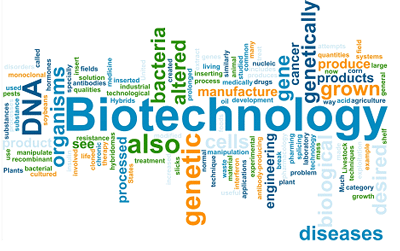
BY ABEBE WOLDEGIORGIS
Currently biotech plays a crucial role in modernizing agriculture particularly in the innovation field, which takes place through utilizing Genetically Modified Organs miraculously changing the spectrum.
It is bumping up crop yields, reducing the need for pesticides, enhancing nutrient content and slashing down cost of food and drug production.
Worku Demela is working in the United Nations Development Program in Montreal Canada. He is advisor on the Environment Principle for the secretariat. He had also participated in the formulation of biosafety law of Ethiopia.
As to him, the technological innovation induced by science advancement has brought tremendous impact on social and economic aspects. At the same time, it has posed controversy particularly from the religious perspective.
Previously scientists who developed the knowledge coined the term “genetic engineering organ” but fearing its social none conformity, they changed it to “genetically modified.” The Cartagena protocol named it “Living modified organisms.” According to which, utilizing technology, the trait of the genes could be changed with the ones brought from other specious.
It differs from the conventional breeding system and it overruled the natural procedure and changed the traits of the gene of plants and animals.
The technology reached the experimental level in 1980s and supplied to the market in 1990s.
In the past when scientists utilized the conventional system, they were unable to transfer animal’s gene traits in two plants but the accentuation of GMO enabled them to do so.
For example in order to protect the plant from diseases, a gene which has a trait that enables it to eliminate the disease will be taken from other plant injected into another plant and, in such manner, protecting the plant from the diseases will be possible. Such practices are quite strange from tissue culture and breeding.
Traditionally, biotechnology was applied for baking bread and producing “Tella and Tej” liquors. But transgenic technology by passes the natural limit. Both proponents and opponents of GMO have agreed that utilizing the transgenic technology should be governed by law.
Dr. Shiferaw Adilu is an economist. As to him, transgenic technology has brought various benefits for agriculture. It has raised productivity, enabled plants to resist diseases and drought, enhanced the nutritional content of crops and allowed the growth of crops on small areas with high productivity. But there are also some concerns in utilizing the technology similar to other ones.
Biotechnology in the field of medicine has created tremendous impact particularly in producing insulin for diabetic patients. Previously insulin derived from pigs was given to patients. Now things have changed.
Insulin is produced through utilizing genetically modified organisms. Genes that can produce insulin will be injected into bacteria which have high capacity to multiply. This way insulin will be produced and harvested. Insulin is a medicine which serves to save human life and to let diabetic patients to live a productive life. Before such type of medicine was invented many diabetic patients were forced to consume more food to placket the disease-provoked hunger in vain.
Insulin is an element created in human pancreas and when a patient fails to produce insulin s/he becomes sick. Hence, when the creation of insulin is done through utilizing the technology the body can produce the element. GMO also serves to create hormones and produce vaccines.
Implanting new gene is mostly practiced on crops.
For example, weed makes trouble on crops and particularly in Ethiopia it reduces productivity.
The herbicide utilized to kill weds might negatively affect the crop. Hence utilizing, GMO has been a preferred choice. The transgenic technology enables the crop to be resilient to herbs.
The numbers of genes are counted in thousands and there are up to 35 thousand genes in human beings.
They reside in our cells that comprise chromosomes. The genes determine our characteristic features for example our length, color, our capacity to resist diseases. They paste the traits in our DNA which helps to develop our characters.
Here we can look how BT cotton works. It releases toxic material on insects when they begin to eat the cotton. The gene which allows the production of toxic material could be extracted from other plants. It will then be injected into cotton or maize genes and the plants will begin to defend themselves from the insect through producing the toxic material. Hence, this shows the irrelevancy of spreading insecticide on cotton or maize which may harm none-targeted plants and the environment at large.
But even if tangible achievements are witnessed from the technology, there are still some debates.
As to Shiferaw, issues such as to what extent does crop productivity rises through utilizing the technology, how much the plant grows free from trouble and how far the benefits surpass the cost of utilizing the technology need unequivocal answers.
In the sphere of medicines much is expected to be gained through the technology. Various researches and experiments are underway.
There are many problems on human immunity system. To fix them the gene therapy might be a solution.
As to Shiferaw, the introduction of the technology has been more than 25 years but there is no registered risks due to the utilization of the technology. However, the issue whether 25 years is sufficient or not is debatable. The other thing that should be underlined is that there is a natural gene pool which should be protected from possible harm.
It helps for the protection of the ecosystem.
In fact, biodiversity could be naturally affected and the movement of one plant gene to the other transported by wind also occurs and it might also be destroyed because of drought and forest fire.
They can be exterminated by human activities.
Eucalyptus tree is an exogenous plant in most places where it existed the number of indigenous plants dwindles. It has economic benefits particularly for construction but due to its high-water consumption inclination other species are forced to diminish, Hence, the planting of this tree should be in restricted places like roadsides. But if it thrives in the wild forests it might create challenges on natural biodiversity. Hence, doing things cautiously is essential.
THE ETHIOPIAN HERALD JANUARY 15/2021




